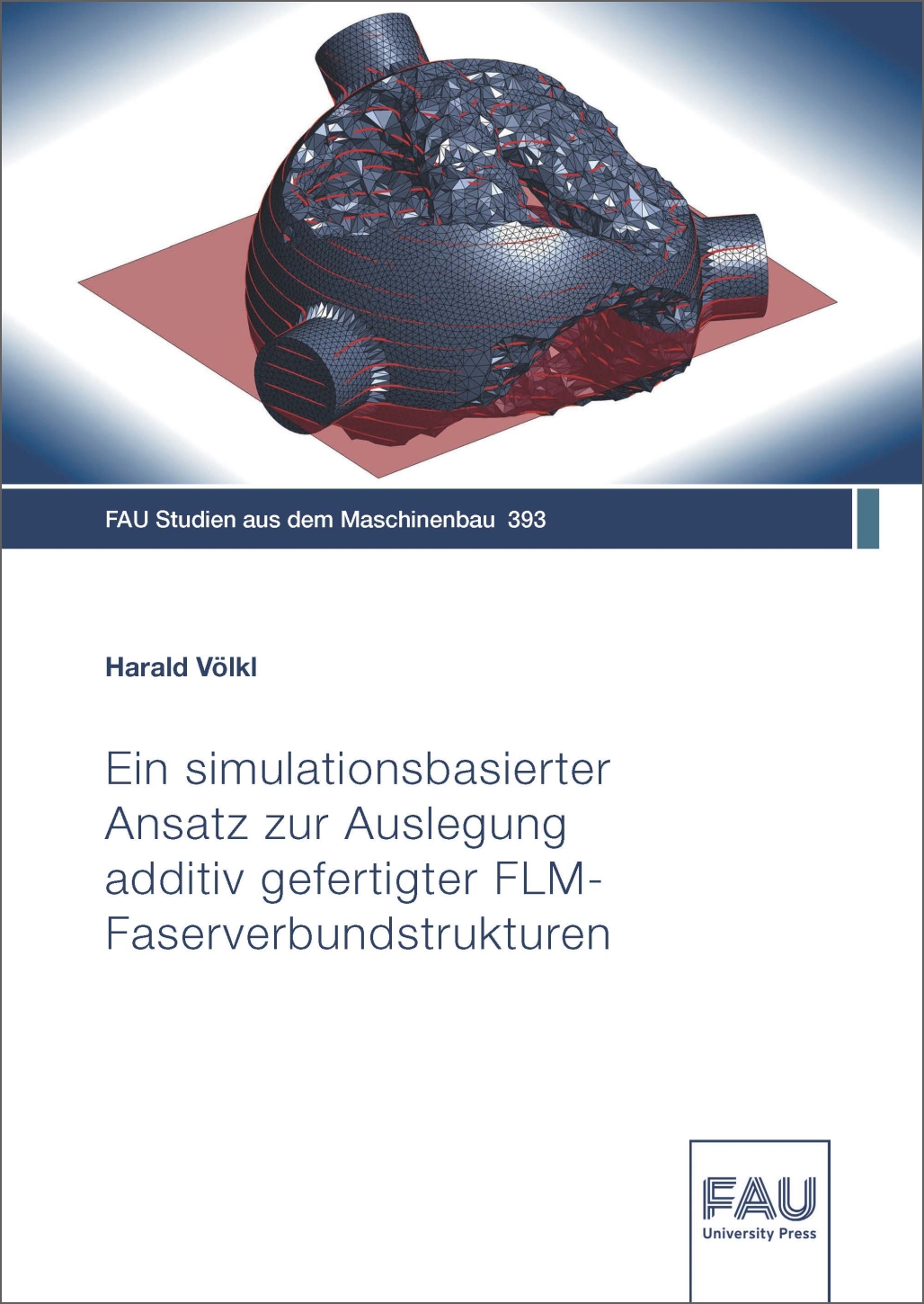Description
Additive Manufacturing (AM) offers great design freedom to be exploited by Design for Additive Manufacturing (DfAM). However, AM components for structural lightweight applications are subject to particularly high stiffness and strength requirements, which necessitate special material, process, and design engineering measures. Fibre-reinforced plastics (FRP) are especially suitable due to their high stiffness and strength. Moreover, the Fused Layer Modelling (FLM) process allows to exploit the pronounced anisotropy of FRP effectively.
This thesis therefore presents a DfAM approach for short-fiber-reinforced lightweight structures. It considers the orthotropic properties of FLM components by build-up direction optimisation to keep the force flow as parallel to the printing platform as possible – and thus, to bypass low stiffness and strength between layers. This step is followed by a topology optimisation with orthotropic material model, which simultaneously optimises both the outer shape and in-plane projected inner material orientations. Subsequent extrusion path generation transforms the optimisation results into printable components. Finally, a simulation approach is presented to compare different FLM components with various infill patterns.
For demonstration, a truss node is optimised under two load cases. The resulting geometry; the same geometry but with different infill patterns; and a conventionally designed variant are compared using the simulation approach. Results show a considerable stiffness gain of the new approach offering structured guidance for product developers.


Reviews
There are no reviews yet.